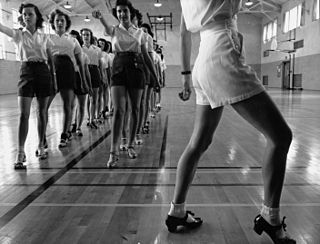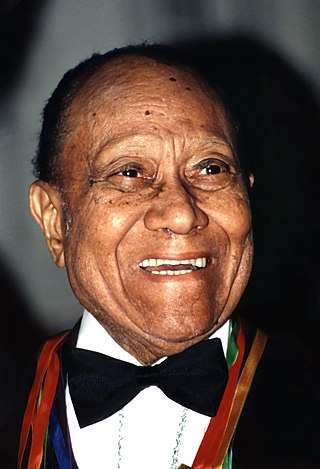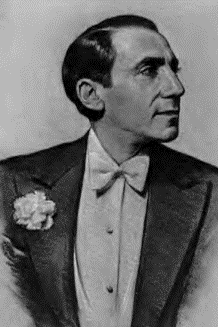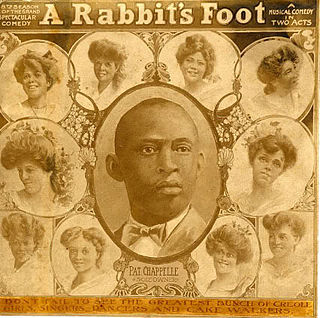Related Research Articles

Sam & Max is an American media franchise about Sam and Max, a pair of anthropomorphic vigilante private investigators. The characters, who occupy a universe that parodies American popular culture, were created by Steve Purcell in his youth, and later debuted in a 1987 comic book series. The characters have since been the subject of a graphic adventure video game developed by LucasArts, a television series produced for Fox in cooperation with Nelvana Limited, and a series of episodic adventure games developed by Telltale Games. In addition, a variety of machinima and a webcomic have been produced for the series.

Tap dance is a form of dance characterized by using the sounds of tap shoes striking the floor as a form of percussion. Two major variations on tap dance exist: rhythm (jazz) tap and Broadway tap. Broadway tap focuses on dance; it is widely performed in musical theater. Rhythm tap focuses on musicality, and practitioners consider themselves to be a part of the jazz tradition.

Eleanor Torrey Powell was an American dancer and actress. Best remembered for her tap dance numbers in musical films in the 1930s and 1940s, she was one of Metro-Goldwyn-Mayer's top dancing stars during the Golden Age of Hollywood. Powell appeared in vaudeville, on Broadway, and most prominently, in a series of movie musical vehicles tailored especially to showcase her dance talents, including Born to Dance (1936), Broadway Melody of 1938 (1937), Rosalie (1937), and Broadway Melody of 1940 (1940). She retired from films in the mid-1940s and then began hosting a Christian children's TV show, but she resurfaced for the occasional specialty dance scene in films such as Thousands Cheer and eventually headlined a successful nightclub act in Las Vegas. She died from cancer at 69. Powell is known as one of the most versatile and powerful female dancers of the Hollywood studio era.

Edwin Fitzgerald, known professionally as Eddie Foy and Eddie Foy Sr., was an American actor, comedian, dancer and vaudevillian.

Master Juba was an African-American dancer active in the 1840s. He was one of the first black performers in the United States to play onstage for white audiences and the only one of the era to tour with a white minstrel group. His real name was believed to be William Henry Lane, and he was also known as "Boz's Juba" following Dickens's graphic description of him in American Notes.

Fayard Antonio Nicholas was an American choreographer, dancer and actor. He and his younger brother Harold Nicholas made up the Nicholas Brothers tap dance duo, who starred in the MGM musicals An All-Colored Vaudeville Show (1935), Stormy Weather (1943), The Pirate (1948), and Hard Four (2007). The Nicholas brothers also starred in the 20th Century-Fox musicals Down Argentine Way (1940), Sun Valley Serenade (1941), and Orchestra Wives (1942).

Harold Lloyd Nicholas was an American dancer specializing in tap. Nicholas was the younger half of the tap-dancing pair the Nicholas Brothers, known as two of the world's greatest dancers. His older brother was Fayard Nicholas. Nicholas was featured in such musicals as An All-Colored Vaudeville Show (1935), Stormy Weather (1943), The Pirate (1948), and The Five Heartbeats (1991).

Gilda Gray was a Polish-American dancer and actress who popularized a dance called the "shimmy" which became fashionable in 1920s films and theater productions.

John William Sublett, known by his stage name John W. Bubbles, was an American tap dancer, vaudevillian, movie actor, and television performer. He performed in the duo "Buck and Bubbles", who were the first black artists to appear on television. He is known as the father of "rhythm tap."

The Juba dance or hambone, originally known as Pattin' Juba, is an African-American style of dance that involves stomping as well as slapping and patting the arms, legs, chest, and cheeks (clapping). "Pattin' Juba" would be used to keep time for other dances during a walkaround. A Juba dance performance could include steps such as the "Jubal Jew", "Yaller Cat", "Pigeon Wing" and "Blow That Candle Out".

Aaron Tolson has been a tap dancer since 1986. He was the assistant choreographer, co-creator and assistant producer of Imagine Tap! - a tap show created with Derick Grant. He is currently an associate professor of dance at The Boston Conservatory in Boston, Massachusetts and is the founder, choreographer, and director for the pre-professional tap company Speaking in Taps.

Antonio DeMarco was an American burlesque/vaudeville dancer in the first half of the 20th century. Performing with his wife Sally, "The Dancing DeMarcos" was an extremely successful exhibition ballroom dance team in the 1940s.
Ernest "Brownie" Brown was an African American tap dancer and last surviving member of the Original Copasetics. He was the dance partner of Charles "Cookie" Cook, with whom he performed from the days of vaudeville into the 1960s, and of Reginald McLaughlin, also known as "Reggio the Hoofer," from 1996 until Brown's death in 2009.

Frank Veloz (1906–1981) and Yolanda Casazza (1908–1995) were a self-taught American ballroom dance team, husband and wife, who became stars in the 1930s and 1940s, and were among the highest paid dance acts during that era. They performed on stage in productions such as Hot-Cha!, which ran for 119 shows on Broadway in 1932. They also appeared in popular films such as Under the Pampas Moon (1935), The Pride of the Yankees (1942), Honeymoon Lodge (1943), Brazil (1944) and The Thrill of Brazil (1946), the latter of which is credited as being of major importance to the growth in popularity of Samba in America.

Black Vaudeville is a term that specifically describes Vaudeville-era African American entertainers and the milieus of dance, music, and theatrical performances they created. Spanning the years between the 1880s and early 1930s, these acts not only brought elements and influences unique to American black culture directly to African Americans but ultimately spread them beyond to both white American society and Europe.

Eccentric dance is a style of dance performance in which the moves are unconventional and individualistic. It developed as a genre in the United States in the late 19th and early 20th centuries as a result of the influence of African and exotic dancers on the traditional styles of clog and tap dancing. Instead of holding the body stiff and straight in the style of a jig, acrobatics such as flips and contortions were used in a more exuberant, expressive and idiosyncratic way.
Leonard Harper was a producer, stager, and choreographer in New York City during the Harlem Renaissance in the 1920s and 1930s.

The Whitman Sisters were four African-American sisters who were stars of Black Vaudeville. They ran their own performing touring company for over forty years from 1900 to 1943, becoming the longest-running and best-paid act on the T.O.B.A. circuit. They comprised Mabel (May) (b. Ohio; 1880–1942), Essie (Essie Barbara Whitman; b. Osceola, Arkansas, July 4, 1882 – May 7, 1963), Alberta "Bert" (b. Kansas; 1887–1964) and Alice (b. Georgia; 1900–December 29, 1968).
William McKinley Covan was an American tap dancer, actor, vaudeville performer best known for being a member of the tap quartet The Four Covans and a choreographer for Metro-Goldwyn-Mayer.
Born in Orange, NJ, Eddie Rector was a famed tap dance artist and master of ceremonies. His career spanned the 1920s-40s as he danced in Harlem, across the US, and in Europe. He is known as a “soft shoe expert,” and he invented the Slap Step. Rector was the protégé of John Leubrie Hill and later danced as a team with Ralph Cooper. He danced in notable revues including Darktown Follies (1914), Tan Town Topics (1926), Blackbirds of 1928, Hot Rhythm (1930), Rhapsody in Black (1931), Blackberries of 1932, and Yeah Man (1932). Eddie Rector died in 1963 at the age of 66.
References
- ↑ "The Four Fords |Mabel|Dora|Edwin|Max|Hetty|Thomas". www.streetswing.com. Retrieved 2020-07-17.
- ↑ “An Art of Infinite Variety: Vaudeville’s Dance Glides From the Oriental to the Ballet to the Naïve Strut”. 1924.
- ↑ "JUBA: Tap History". 2016-03-04. Archived from the original on 2016-03-04. Retrieved 2023-06-07.
- ↑ "Dora Ford". IMDb. Retrieved 2023-06-07.
- ↑ "Mabel Ford". IMDb. Retrieved 2023-06-07.
- ↑ "From Master Juba to 'Happy Feet': A Brief History of Tap Dancing". Highbrow Magazine. 2012-12-31. Retrieved 2023-06-07.
- ↑ "The Four Fords |Mabel|Dora|Edwin|Max|Hetty|Thomas". www.streetswing.com. Retrieved 2023-06-07.